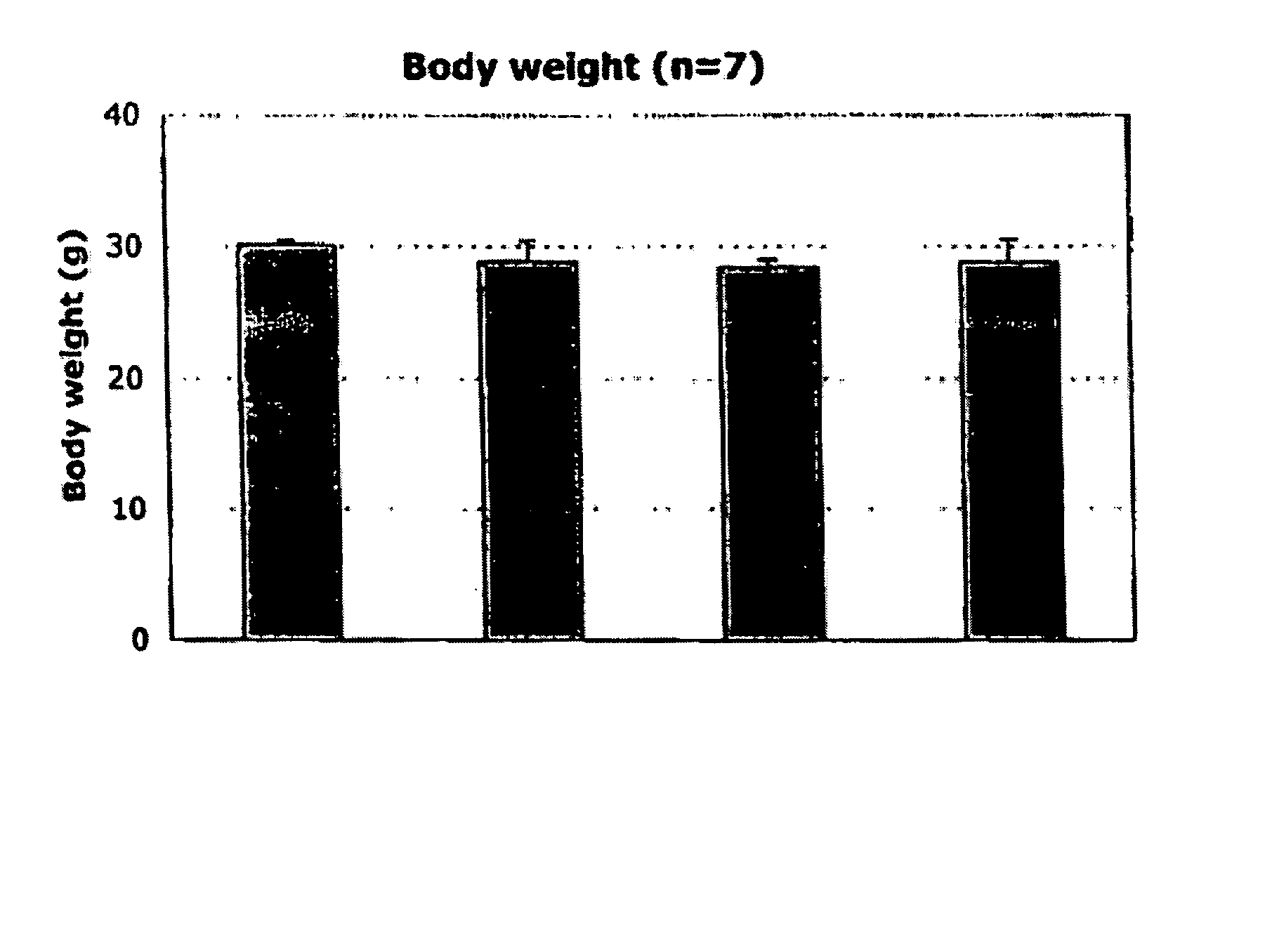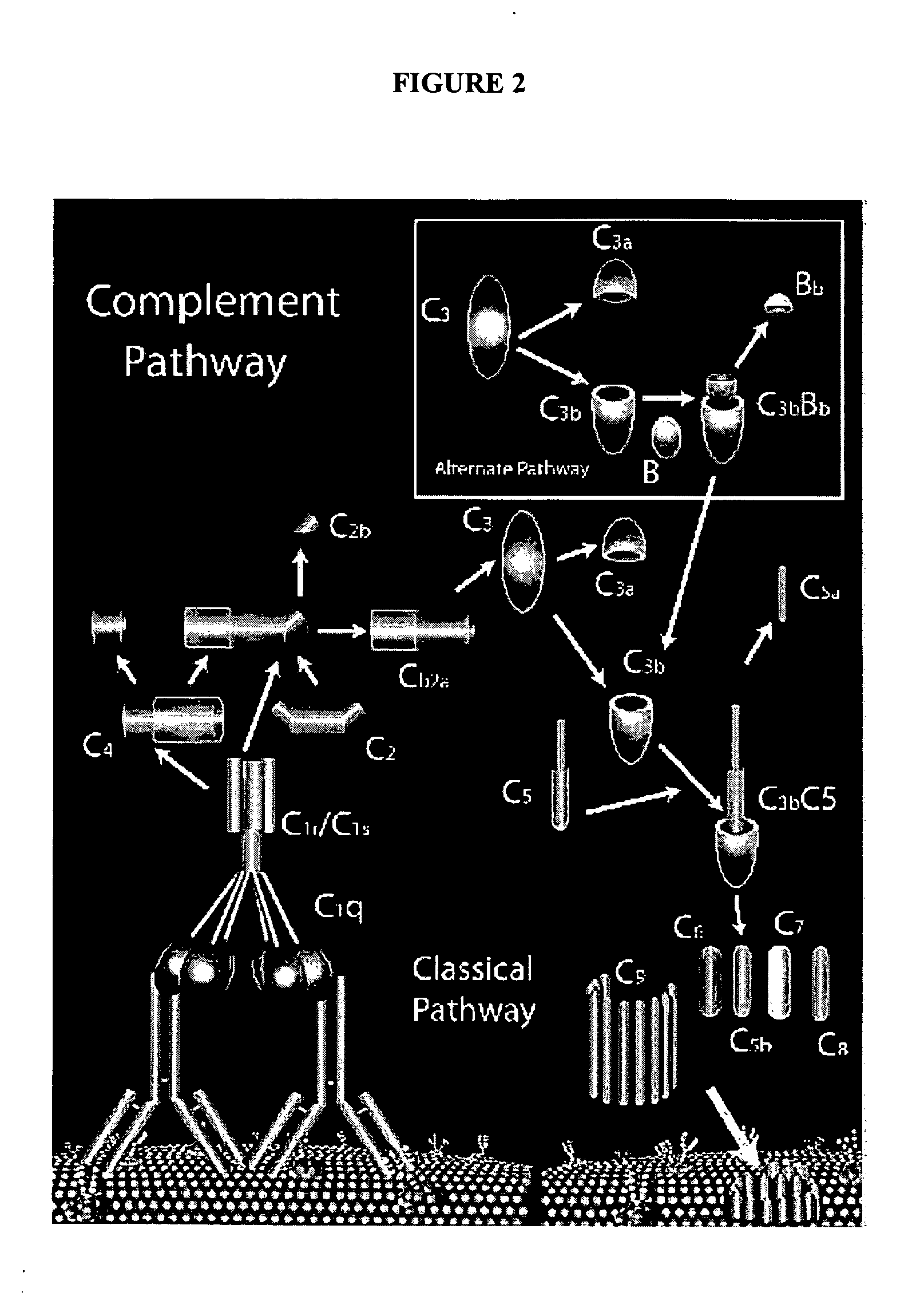Methods and compositions for altering cell function
a cell function and cell technology, applied in the field of cell function alteration, can solve the problems of inorganic and organic selenium absorption and toxicities, poor selenium content of crops, and significant difference between absorption and toxicities of inorganic and organic selenium, so as to prevent or minimize biological events, reduce signs or symptoms, and reduce cognitive function
- Summary
- Abstract
- Description
- Claims
- Application Information
AI Technical Summary
Benefits of technology
Problems solved by technology
Method used
Image
Examples
example 1
Materials and Methods
[0313] Animal Care. Male C57BL / 6J mice were housed singly and started on the experimental diets described below immediately after weaning (21 days of age). The mice were maintained in the Shared Aging Rodent Facility at the William S. Middleton Memorial Veterans Administration Medical Center (Madison, Wis.). Temperature and humidity were maintained at constant levels. Room light was controlled to provide 12-hr cycles of light and dark.
[0314] Experimental diets were created by Harlan Teklad (Madison, Wis.). Selenium content of the diets was determined by Covance Inc. (Madison, Wis.). Five (5) animals were included in each of the following treatment groups: a diet deficient in selenium (SD); a diet supplemented with selenomethionine (SM, obtained from Sigma, St. Louis, Mo.) such that the final selenium content of the diet was one (1) part per million; a diet supplemented with sodium selenite (SS, Sigma) such that the final concentration of selenium in this diet ...
example 2
Dietary Selenium Alters Gene Expression in the Mouse Intestine
[0334] The ability of dietary selenium (e.g., derived from various sources such as SeM, Sel-sod, and SEL-PLEX) to alter the physiology (e.g., physiologic homeostasis) and the expression patterns (e.g., protein or gene expression patterns) of various functional groups of proteins and various protein pathways in mouse intestine and brain (e.g., cerebral cortex) was examined.
[0335] Thus, it was an object of the present invention to determine whether compositions and methods of the present invention could alter the expression levels (e.g., mRNA levels) of various genes. One group of genes analyzed were genes classically associated with selenium. As described above, the expression levels of genes were analyzed between mice with and without dietary selenium, or, between mice fed different sources of selenium) (See, e.g., Table 1, below). No significant differences were observed in body weights of mice receiving a diet deficie...
example 3
Dietary Selenium Alters the Expression Level of Selenoprotein-Encoding Genes in a Selenium Source-Dependent Manner
[0340] Selenium (Se) is now known to be incorporated as selenocysteine in a number of selenoproteins, glutathione peroxidase (GSH-Px, See Example 2) being the prototypical example. Selenocysteine is specifically encoded by the UGA codon, and inserted in peptide chains by a cotranslational mechanism that is able to override the normal function of UGA as a termination codon. In eukaryotes, efficient selenocysteine incorporation at UGA codons requires a cellular protein factor and a cis-acting structural signal usually located in the mRNA 3′-untranslated region (3′-UTR), consisting of a selenocysteine insertion sequence (SECIS) in a characteristic stem-loop structure (See, e.g., Peterlin et al., (1993), In Human Retroviruses; Cullen, Ed.; Oxford University Press: New York; pp. 75-100; Le and Maizel, Theor. Biol. 138:495 (1989)). The required protein factor is presumed to b...
PUM
 Login to View More
Login to View More Abstract
Description
Claims
Application Information
 Login to View More
Login to View More - Generate Ideas
- Intellectual Property
- Life Sciences
- Materials
- Tech Scout
- Unparalleled Data Quality
- Higher Quality Content
- 60% Fewer Hallucinations
Browse by: Latest US Patents, China's latest patents, Technical Efficacy Thesaurus, Application Domain, Technology Topic, Popular Technical Reports.
© 2025 PatSnap. All rights reserved.Legal|Privacy policy|Modern Slavery Act Transparency Statement|Sitemap|About US| Contact US: help@patsnap.com



